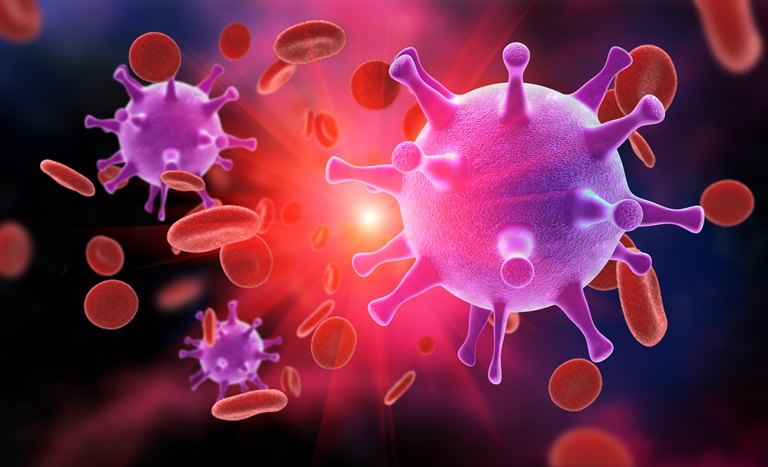
The immune system plays a critical role in the human body, helping to protect the body from infectious organisms and other foreign invaders. It relies on a complex system of cells and proteins which prevent infections and diseases from causing damage.
Unfortunately, abnormalities of the immune system can result in it mistakenly attacking healthy cells. This usually occurs as a result of an autoimmune disease. There are many types of autoimmune diseases which attack different parts of the body and have a wide variety of side effects. Some of these diseases can be life-threatening.
While many autoimmune diseases are currently incurable, researchers are making great progress towards developing treatments thanks to the amazing regenerative properties of stem cells. This article will explain why autoimmune conditions occur and how cord blood stem cells are being used as a potential cure.
What causes autoimmune diseases?
An autoimmune disease occurs when the antibodies in the immune system attack the body’s healthy tissues and organs. This leads to the deterioration or destruction of the tissue. There are approximately 80 different autoimmune diseases with symptoms ranging in severity. The most common autoimmune diseases include:
- Rheumatoid arthritis
- Graves’ disease
- Type 1 diabetes
- Psoriasis
- Lupus
- Coeliac disease
Autoimmune diseases can be placed into one of two categories. Organ-specific autoimmune diseases affect a specific organ, while non-organ-specific affect multiple organs or the entire body.
The precise cause of autoimmune diseases is currently unknown. However, researchers have found that autoimmune conditions most often happen to people with a genetic predisposition. Environmental factors including medications, diet, exposure to UV light, stress, and infections can also trigger the symptoms of an autoimmune disease.
Autoimmune diseases that may soon be treatable with stem cells
Lupus
Systemic lupus erythematosus (SLE), also known as Lupus, is a chronic autoimmune disease. Lupus occurs when the immune system mistakenly attacks healthy tissue in the body, which can include the skin, joints, lining of the heart and lungs, and kidneys. The effects of lupus can range from mild to life-threatening.
The most common types are lupus are:
- Systemic lupus erythematosus (SLE)
This is a systemic form of lupus condition which can affect the entire body, including the brain, skin, kidneys, and joints. - Discoid lupus erythematosus (DLE)
This version of lupus primarily affects the skin, causing redness and scaly patches. - Drug-induced lupus
Certain drugs can cause SLE-like symptoms, which will disappear after the medication is no longer taken. - Neonatal lupus
This is a very rare form of the condition that can affect a foetus or young baby.
The symptoms of lupus are quite varied and can include joint and muscle pain, hair loss, fatigue, skin rashes, ulcers, chest pain, poor kidney function, anaemia, and seizures.
Researchers are trialing various stem cell treatments for lupus. They believe that stem cells can reduce the number of antibodies in a patient’s system, which will may substantially reduce lupus symptoms. Stem cells may also be able to modulate the immune system’s response and prevent excessive inflammation from lupus.
Graft Versus Host Disease (GVHD)
Graft Versus Host Disease is a fairly common autoimmune disease that affects transplant patients. It occurs when the antibodies in transplanted tissue received by a patient begin to attack the patient’s body. It can occur anytime after a transplant, but is more common shortly after a transplant. The symptoms of GVHD include abdominal pain, diarrhoea, mouth ulcers, frequent infections, nausea, and weight loss. It is a potentially life threatening condition.
Recent studies have tested the ability of mesenchymal stem cells (MSC) from umbilical cord blood to moderate the immune system and reduce the symptoms of GVHD. Scientists are also interested in using stem cells to lower the immunosuppressant treatments that patients require after a transplant.
Crohn’s disease
Crohn’s disease is a chronic inflammatory condition affecting the lining of the digestive tract. It causes many symptoms including pain in the abdomen and rectum, bloating, blood in stool, fatigue, diarrhoea, nausea, and bowel obstructions. The cause of Crohn’s disease is unknown, but researchers believe that it may be caused by a combination of immune system problems, genetics, and environmental factors.
People who have Crohn’s disease will produce an excessive amount of Tumour Necrosis Factor (TNF), which damages gut flora. This makes it difficult for sufferers of Crohn’s disease to digest food and causes the symptoms mention earlier. There is currently no cure for this condition.
There are currently 47 studies investigating the use of stem cells to treat Crohn’s disease. Of these studies, 5 are using umbilical cord blood or tissue. Initial results of the studies completed thus far have been very positive, with many test subjects experiencing a significant decline in the severity of their symptoms.
Learn more about how stem cells can treat autoimmune diseases
If you are interested in learning more about stem cell research, download our latest Clinical Report in PDF. This document details some of the ongoing clinical trials that are using stem cells to treat autoimmune diseases.
Sources
https://www.allergy.org.au/patients/autoimmunity/autoimmune-diseases
https://lupuslinkmn.org/types-of-lupus/
{{cta(‘d62560c2-336a-4f88-9683-44a37a5bd7fd’)}}


